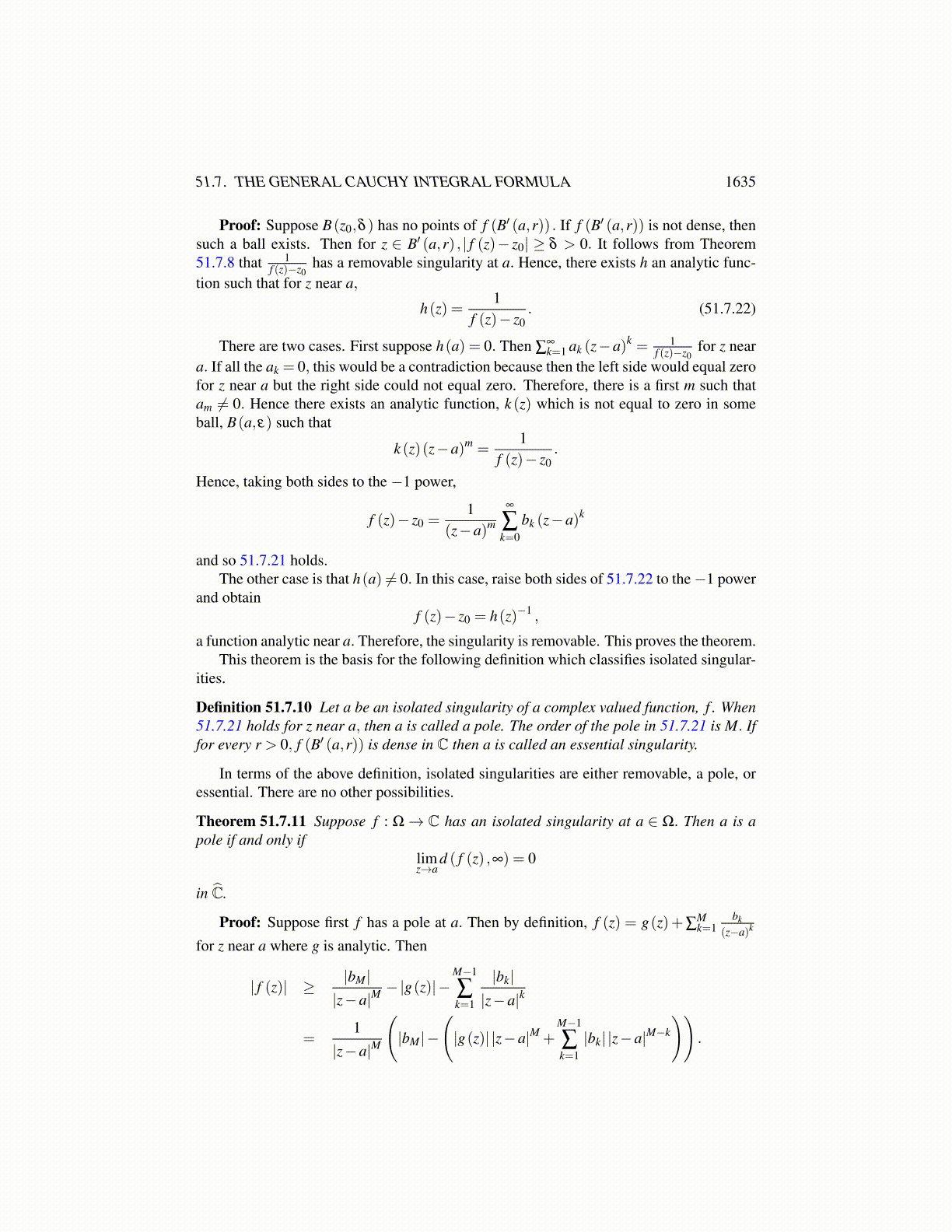
51.7. THE GENERAL CAUCHY INTEGRAL FORMULA 1635
Corollary 51.7.3 Let Ω be an open set and suppose that whenever
γ (z1,z2,z3,z1)
is a closed curve bounding a triangle T, which is contained in Ω, and f is a continuousfunction defined on Ω, it follows that∫
γ(z1,z2,z3,z1)f (z)dz = 0,
then f is analytic on Ω.
Proof: As in the proof of Morera’s theorem, let B(z0,r)⊆Ω and use the given conditionto construct a primitive, F for f on B(z0,r) . Then F is analytic and so by Theorem 51.3.11,it follows that F and hence f have infinitely many derivatives, implying that f is analyticon B(z0,r) . Since z0 is arbitrary, this shows f is analytic on Ω.
51.7.2 A Redundant AssumptionEarlier in the definition of analytic, it was assumed the derivative is continuous. Thisassumption is redundant.
Theorem 51.7.4 Let Ω be an open set in C and suppose f : Ω→ X has the property thatf ′ (z) exists for each z ∈Ω. Then f is analytic on Ω.
Proof: Let z0 ∈ Ω and let B(z0,r) ⊆ Ω. By Morera’s theorem f has a primitive, Fon B(z0,r) . It follows that F is analytic because it has a derivative, f , and this deriva-tive is continuous. Therefore, by Theorem 51.3.11 F has infinitely many derivatives onB(z0,r) implying that f also has infinitely many derivatives on B(z0,r) . Thus f is analyticas claimed.
It follows a function is analytic on an open set, Ω if and only if f ′ (z) exists for z ∈ Ω.This is because it was just shown the derivative, if it exists, is automatically continuous.
The same proof used to prove Theorem 51.7.2 implies the following corollary.
Corollary 51.7.5 Let Ω be a convex open set and suppose that f ′ (z) exists for all z ∈ Ω.Then f has a primitive on Ω.
Note that this implies that if Ω is a convex open set on which f ′ (z) exists and if γ :[a,b]→ Ω is a closed, continuous curve having bounded variation, then letting F be aprimitive of f Theorem 50.0.13 implies∫
γ
f (z)dz = F (γ (b))−F (γ (a)) = 0.
Notice how different this is from the situation of a function of a real variable! It is pos-sible for a function of a real variable to have a derivative everywhere and yet the derivativecan be discontinuous. A simple example is the following.
f (x)≡{
x2 sin( 1
x
)if x ̸= 0
0 if x = 0.